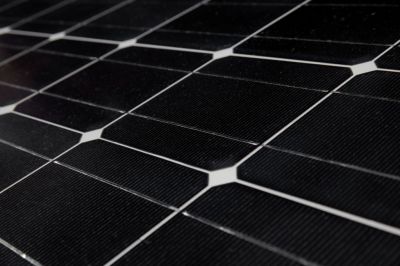Silevo starts commercial production of 21% efficient hybrid PV modules
 Silevo, Inc. is bringing a new type of silicon-based photovoltaic to the market that the company is calling a hybrid PV cell. The Triex design integrates a standard silicon wafer with other, active layers to produce a more efficient PV module, which the company says is more than 21 percent efficient.
Silevo, Inc. is bringing a new type of silicon-based photovoltaic to the market that the company is calling a hybrid PV cell. The Triex design integrates a standard silicon wafer with other, active layers to produce a more efficient PV module, which the company says is more than 21 percent efficient.
“We’ve developed our own cell architecture,” said Silevo Vice President of Business Development Chris Beitel. “We purchase wafers and then deposit all the critical layers to ultimately make a functioning solar cell.” The company’s PV cells are unique in that they sandwich a traditional silicon PV wafer with layers of thin-film passivation and a tunneling oxide layer.
The production method is anticipated to produce lower cost PV cells. At this point, with the 32 megawatts production facility, the company will produce solar cells that cost 98 cents per watt to manufacture. But that will fall as the company ramps up more production, according to Beitel. “Ultimately we believe the cost structure we can achieve is around 61 cents.” In fact, he anticipates that in 2013, the production costs should fall to the low 70 cents per watt range in 2013.
Fremont, Calif.-based Silevo has recently completed its first commercial production facility in Hangzhou, China, said Beitel. He said the first line is capable of produce 32 megawatts of PV modules annually. “As we ramp next year, we plan to roll out more [production capacity] in the second half of 2013,” he said. It could ramp up to 230 megawatts of annual production capacity in 2013.
“We formally unstealthed last October,” Beitel said. Since then the company has supplied customers with test cells, but now it will start supporting larger orders from installers and distributers. “We’ve got a strong backlog and going into that launch,” he said.
It’s got a backlog of 250 megawatts of orders to fulfill. “We’re shipping our first volume products tot these customers now. We have a customer base in Europe, the U.S. and China,” Beitel said. He said most of their early customers have been distributors, but they’re also working with larger installers and developers. He anticipates that the modules could be used in commercial installations like large warehouse rooftops later this year, with the sizes reaching up to 1 megawatt later in 2012.



